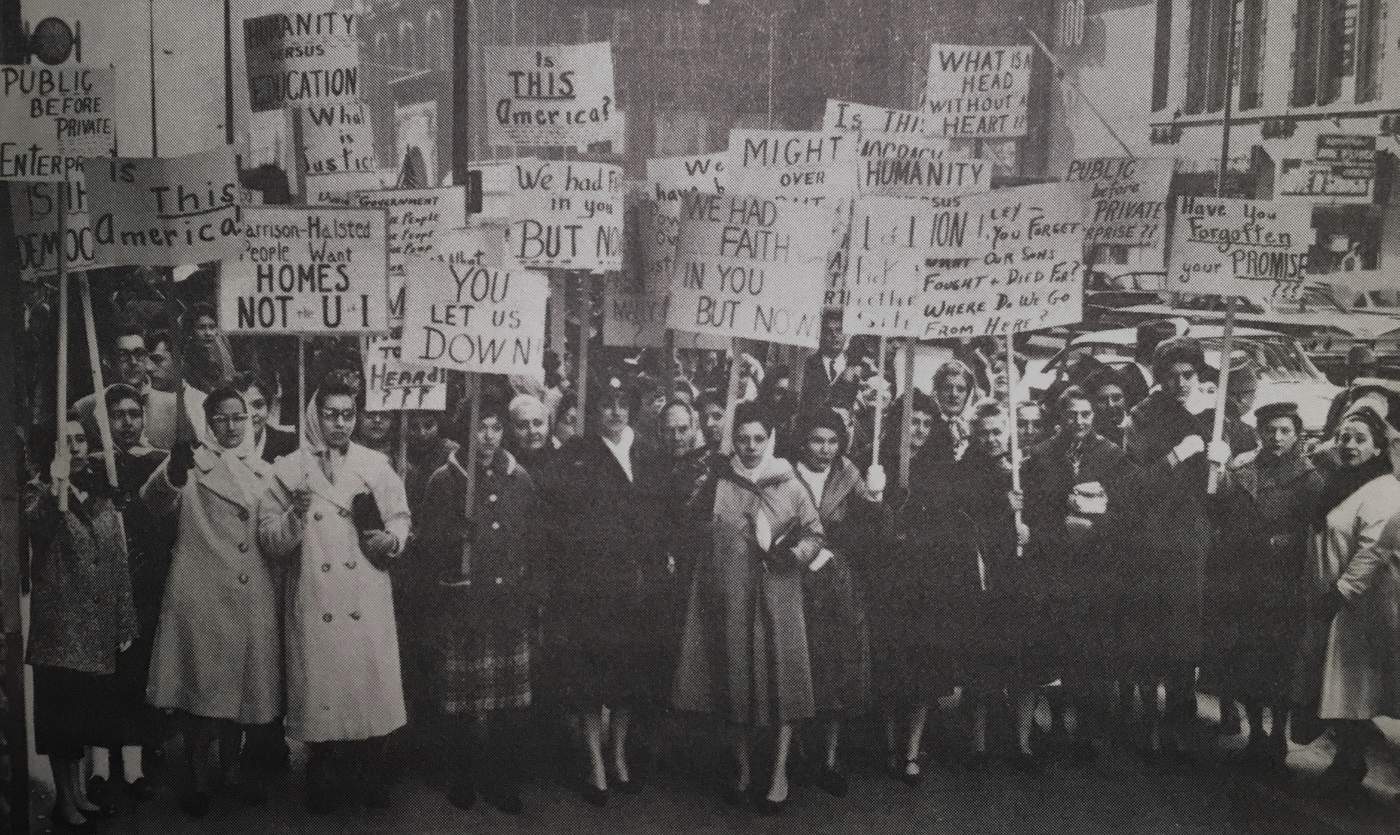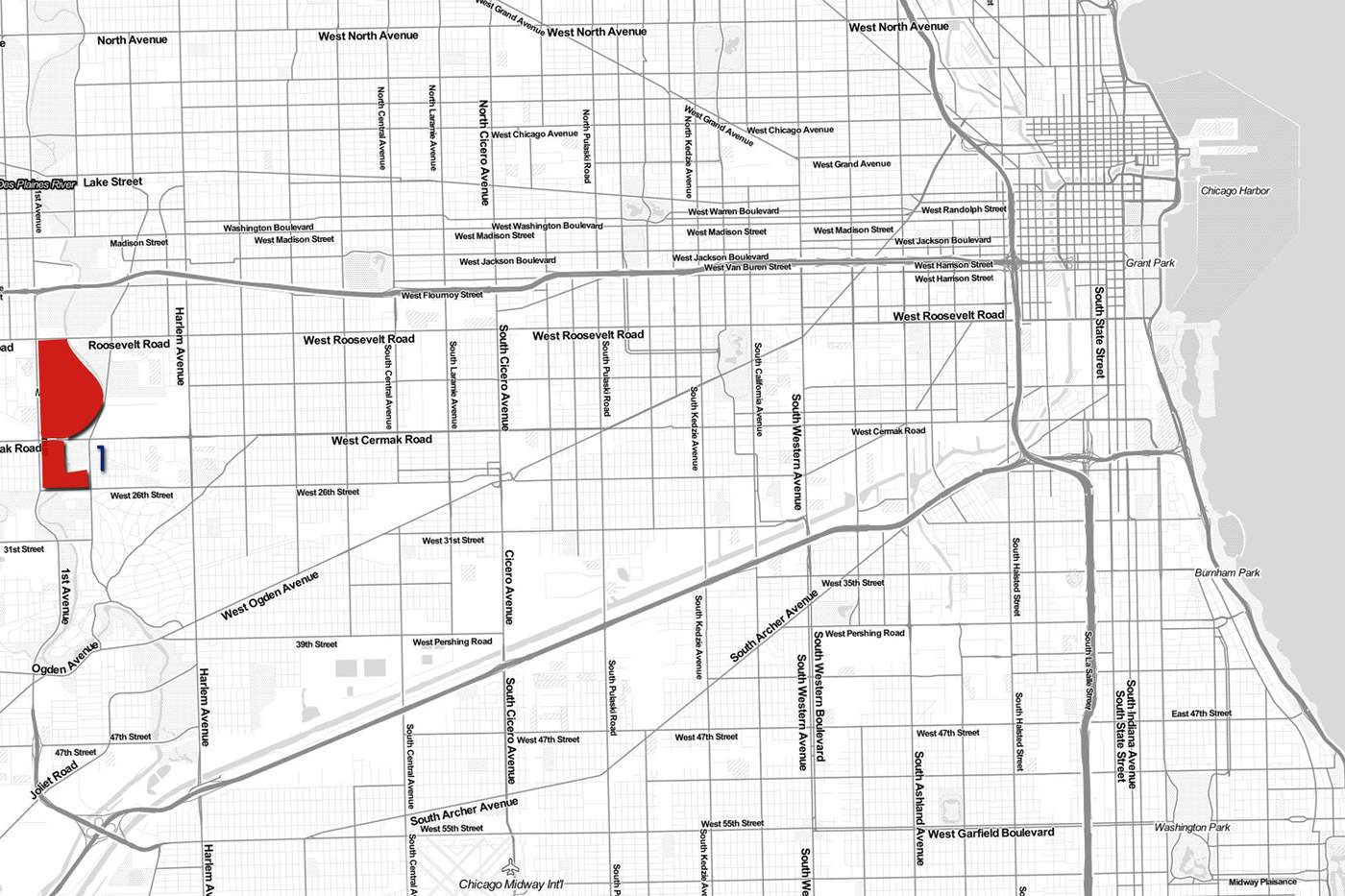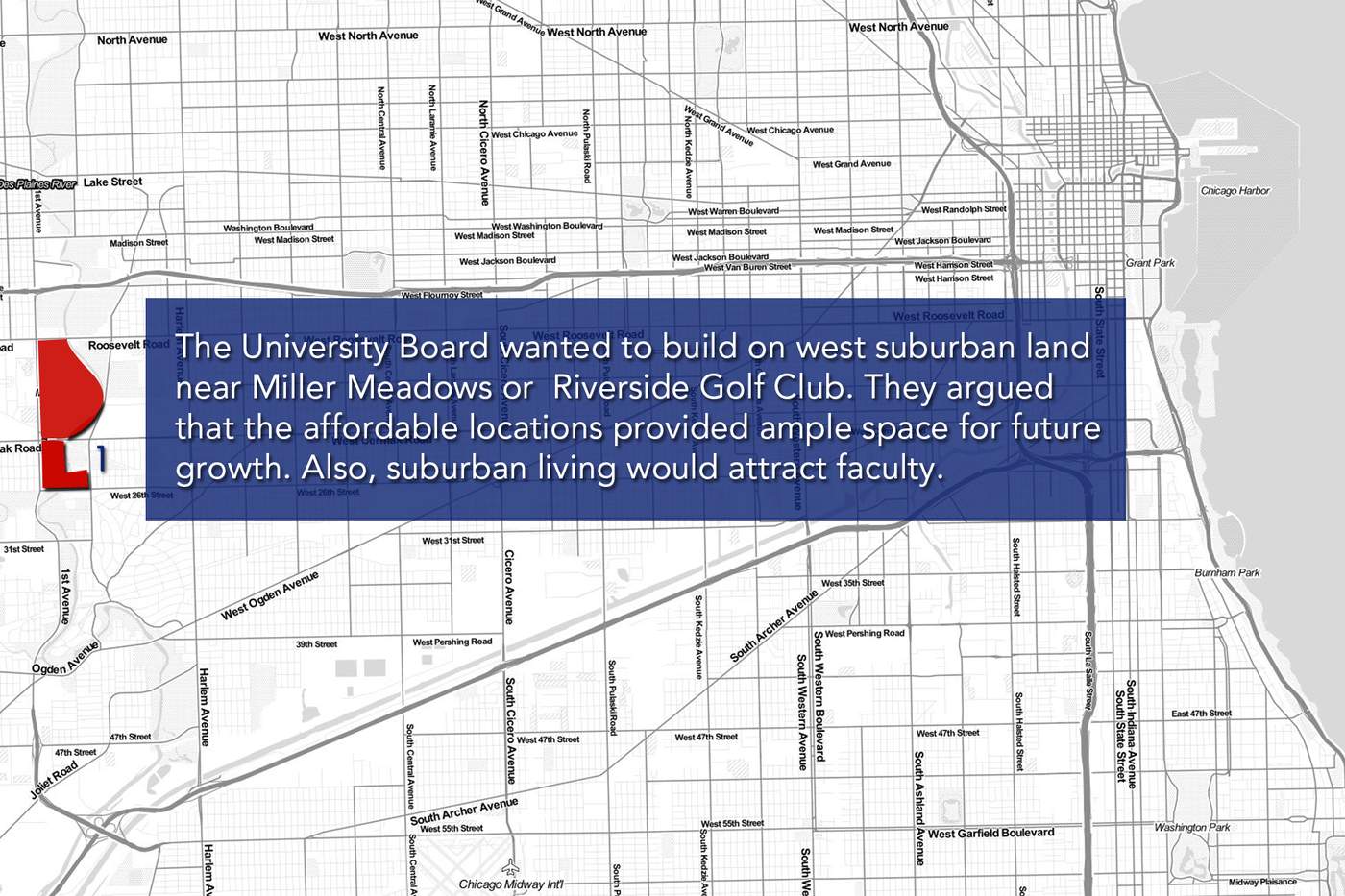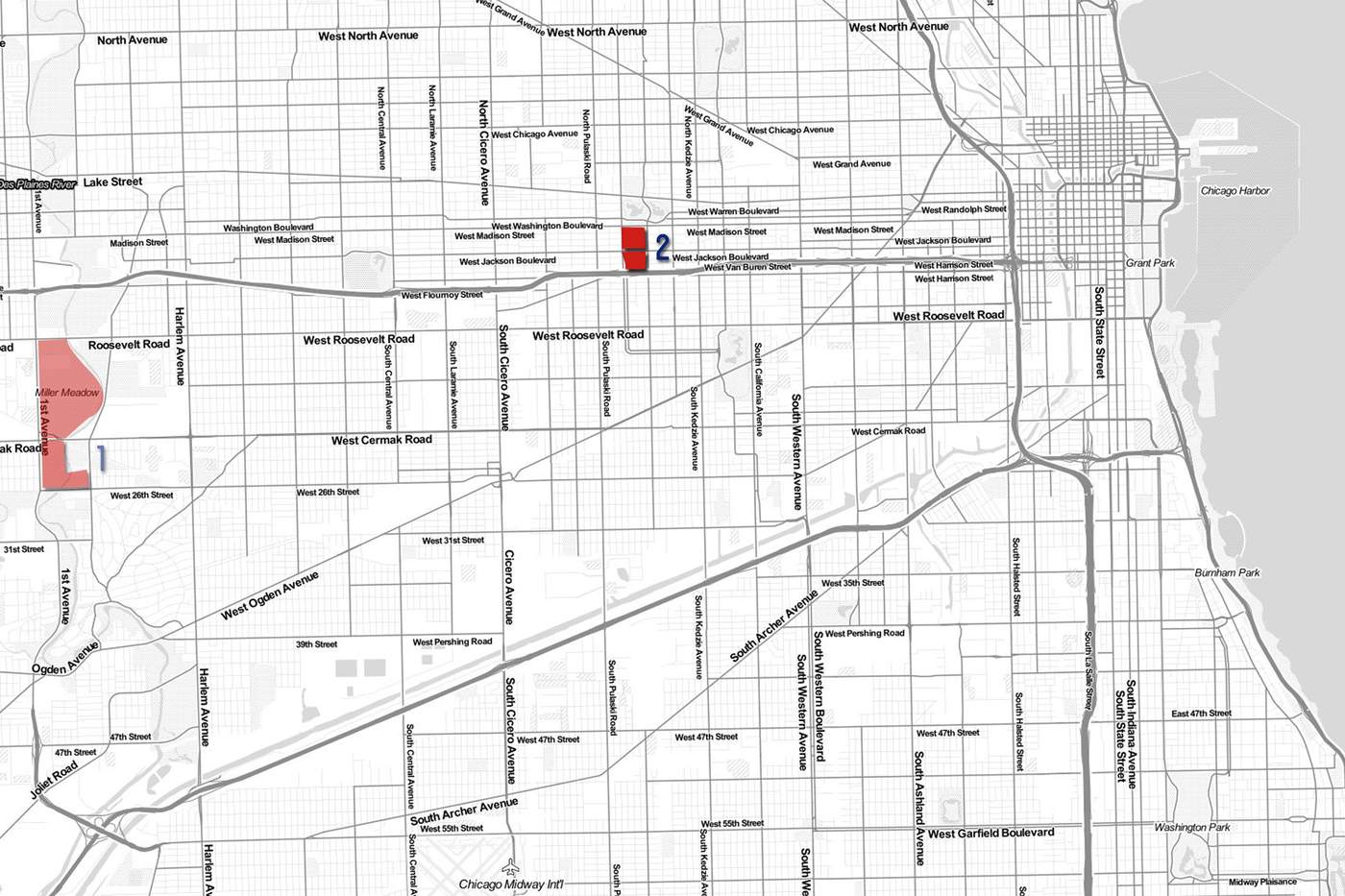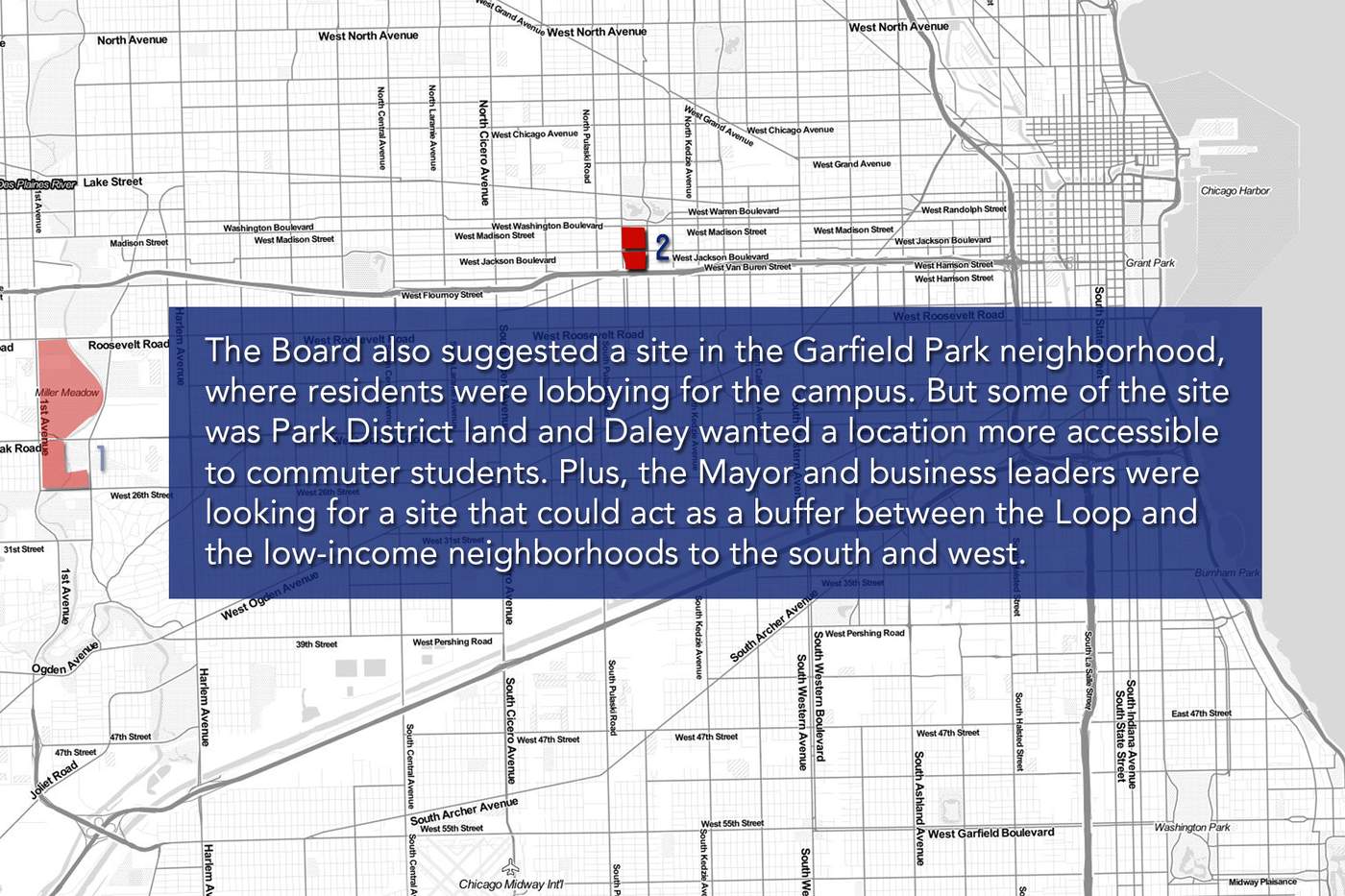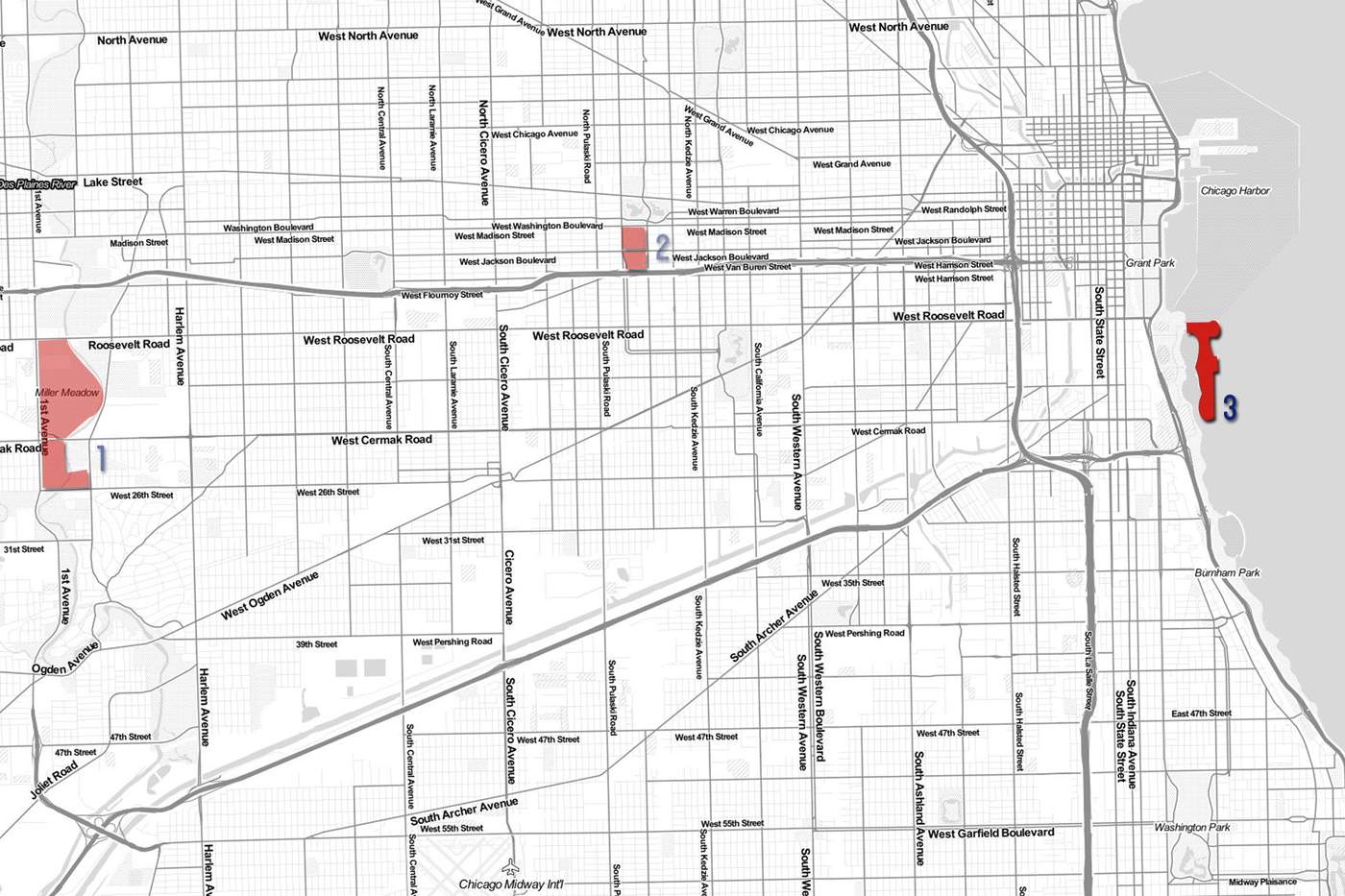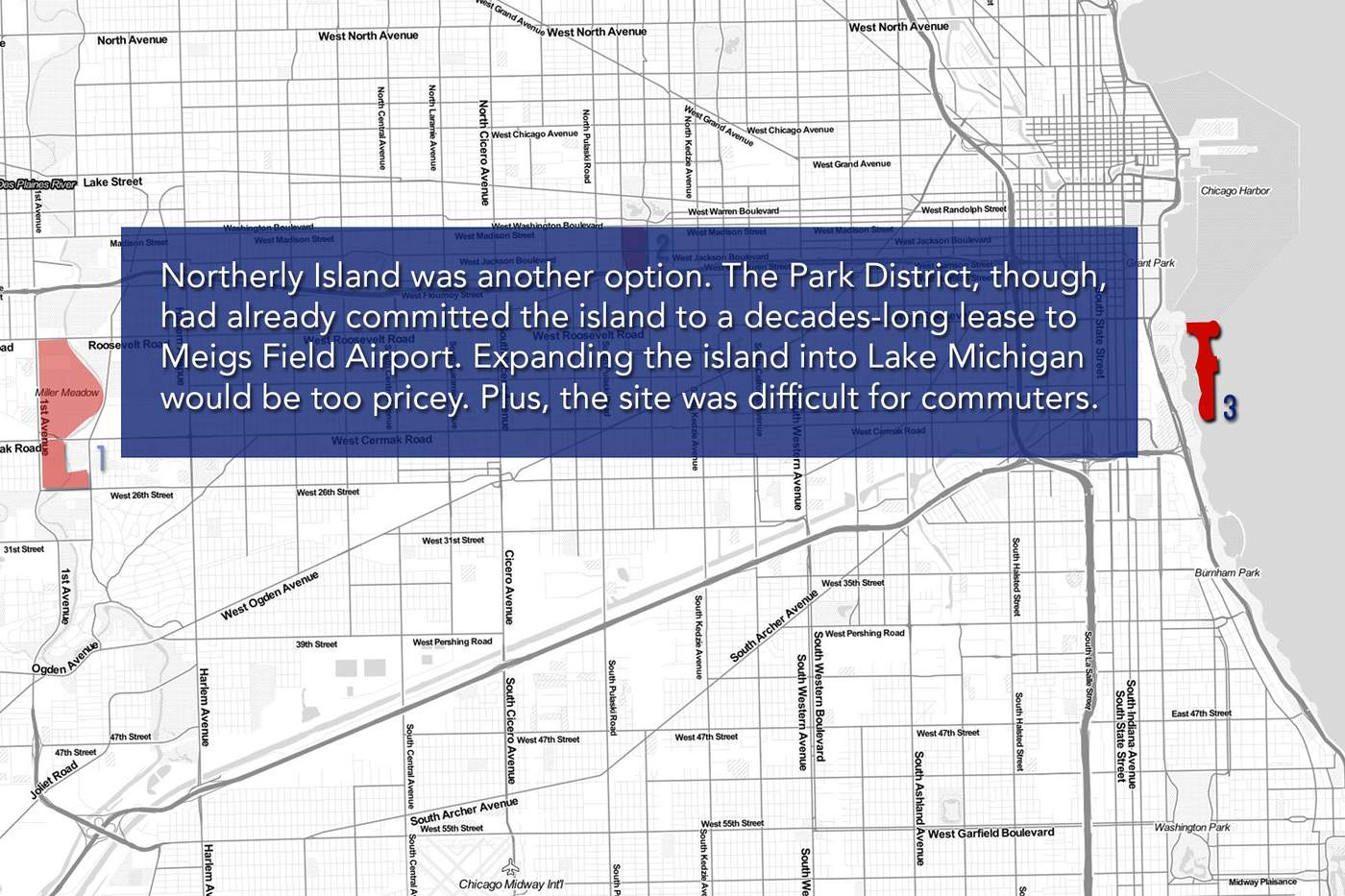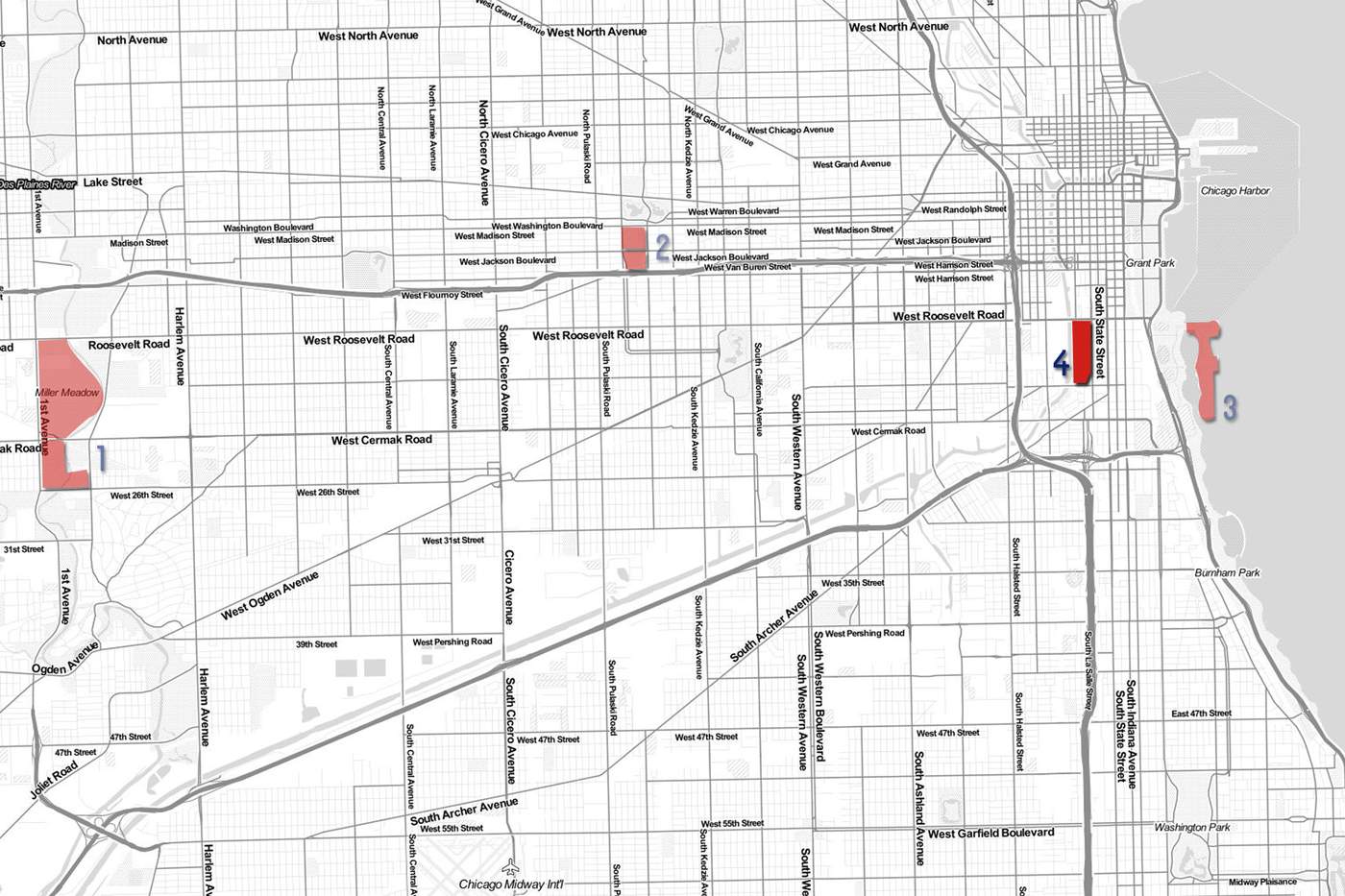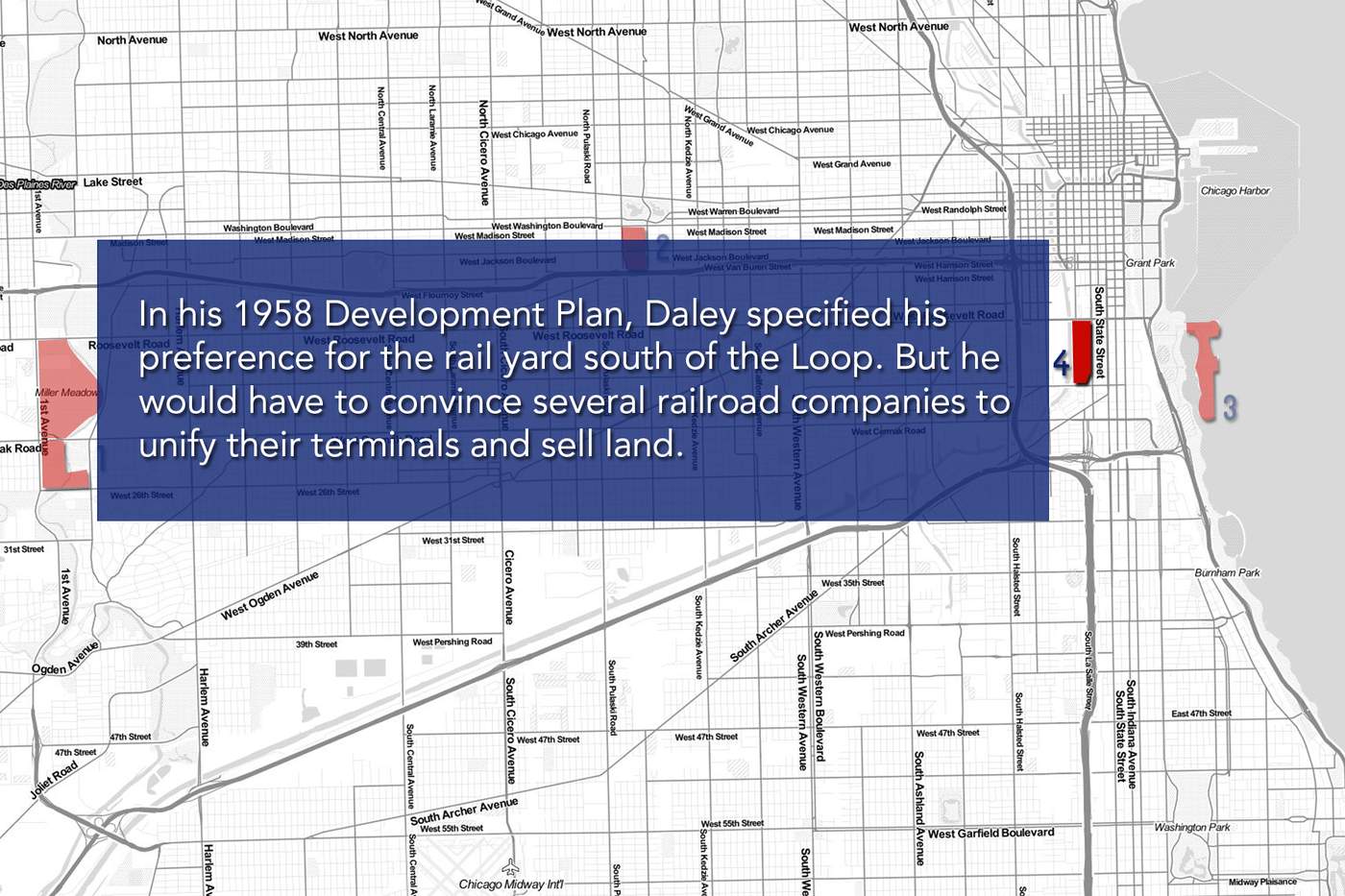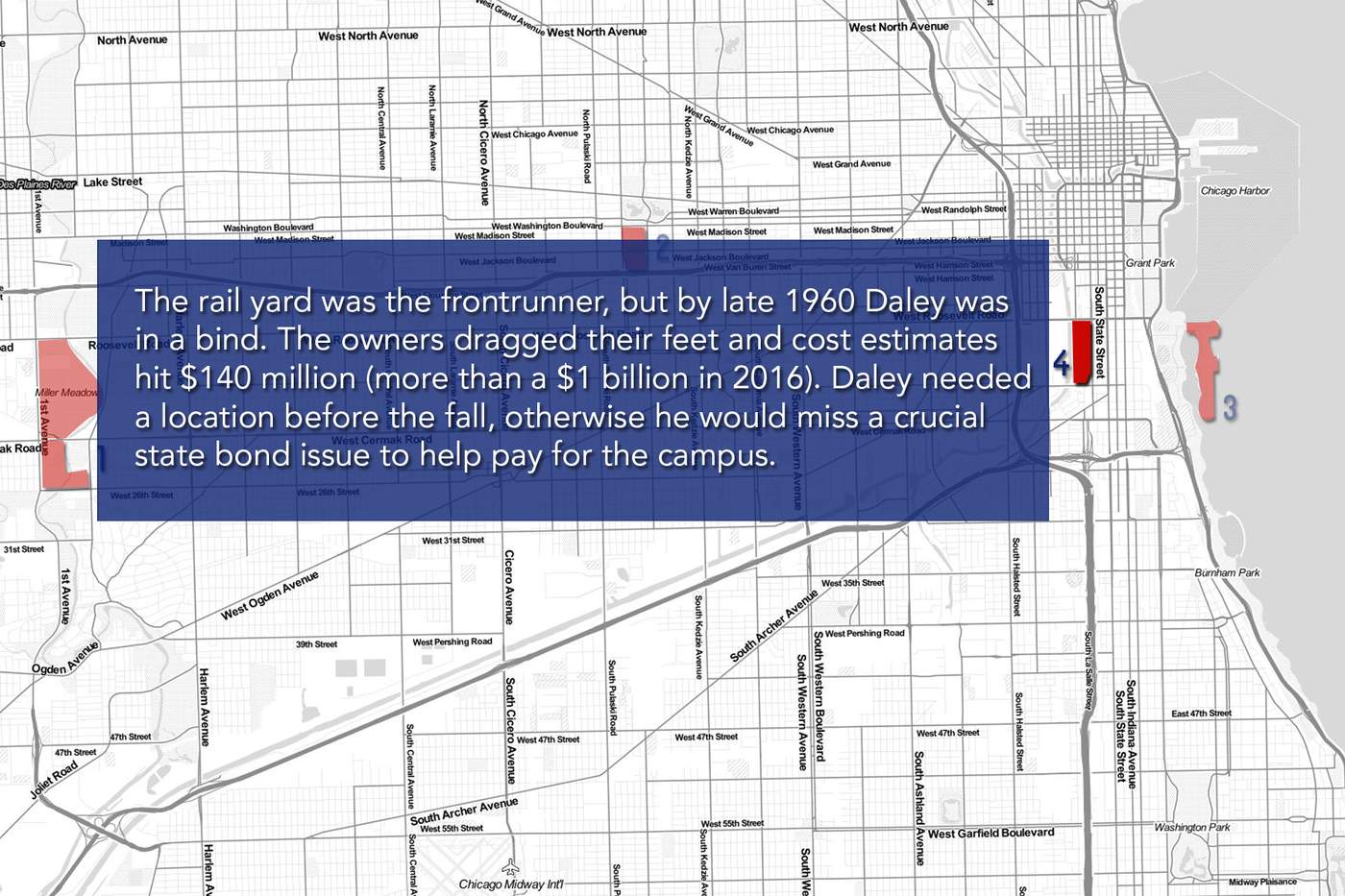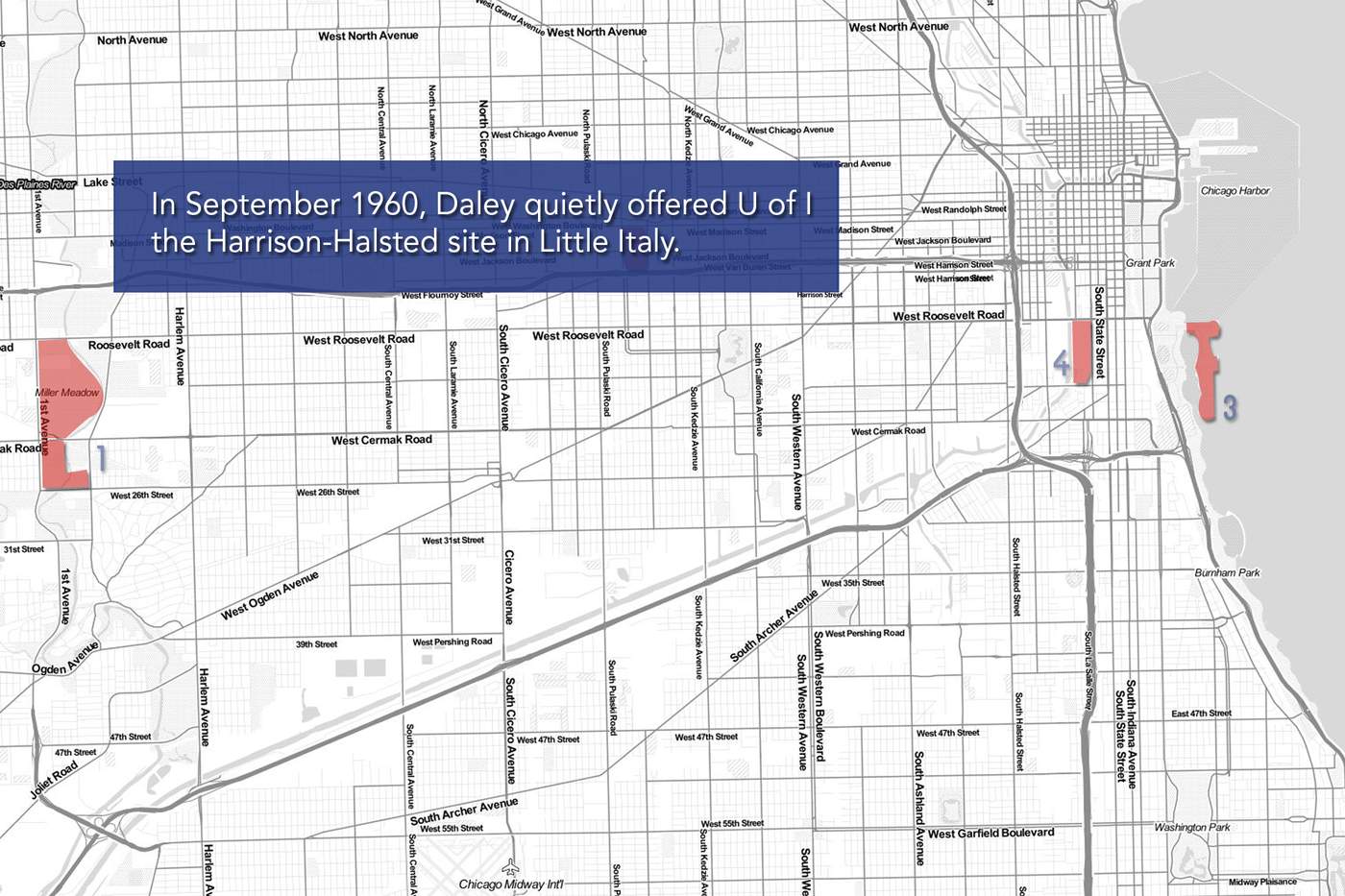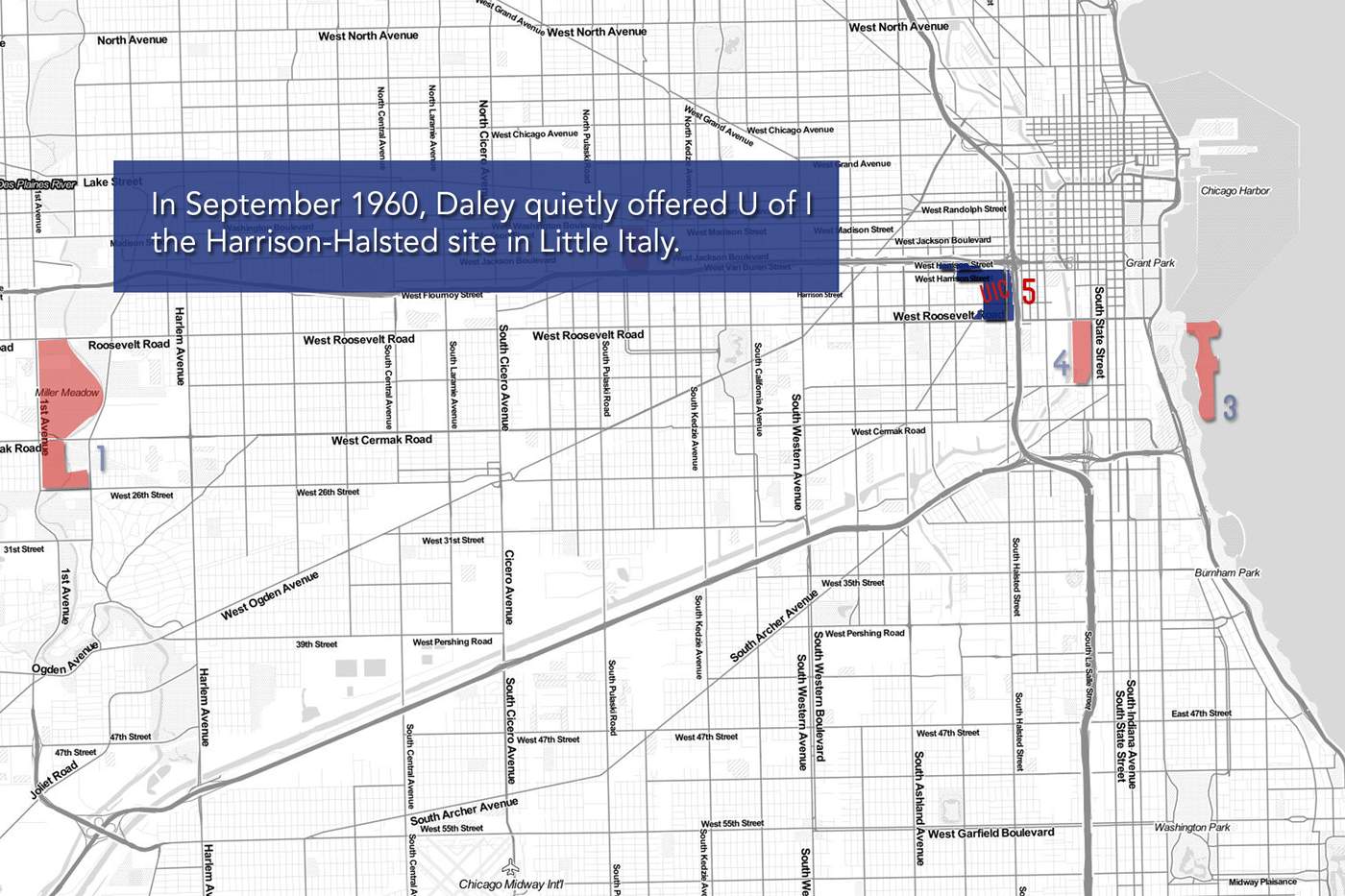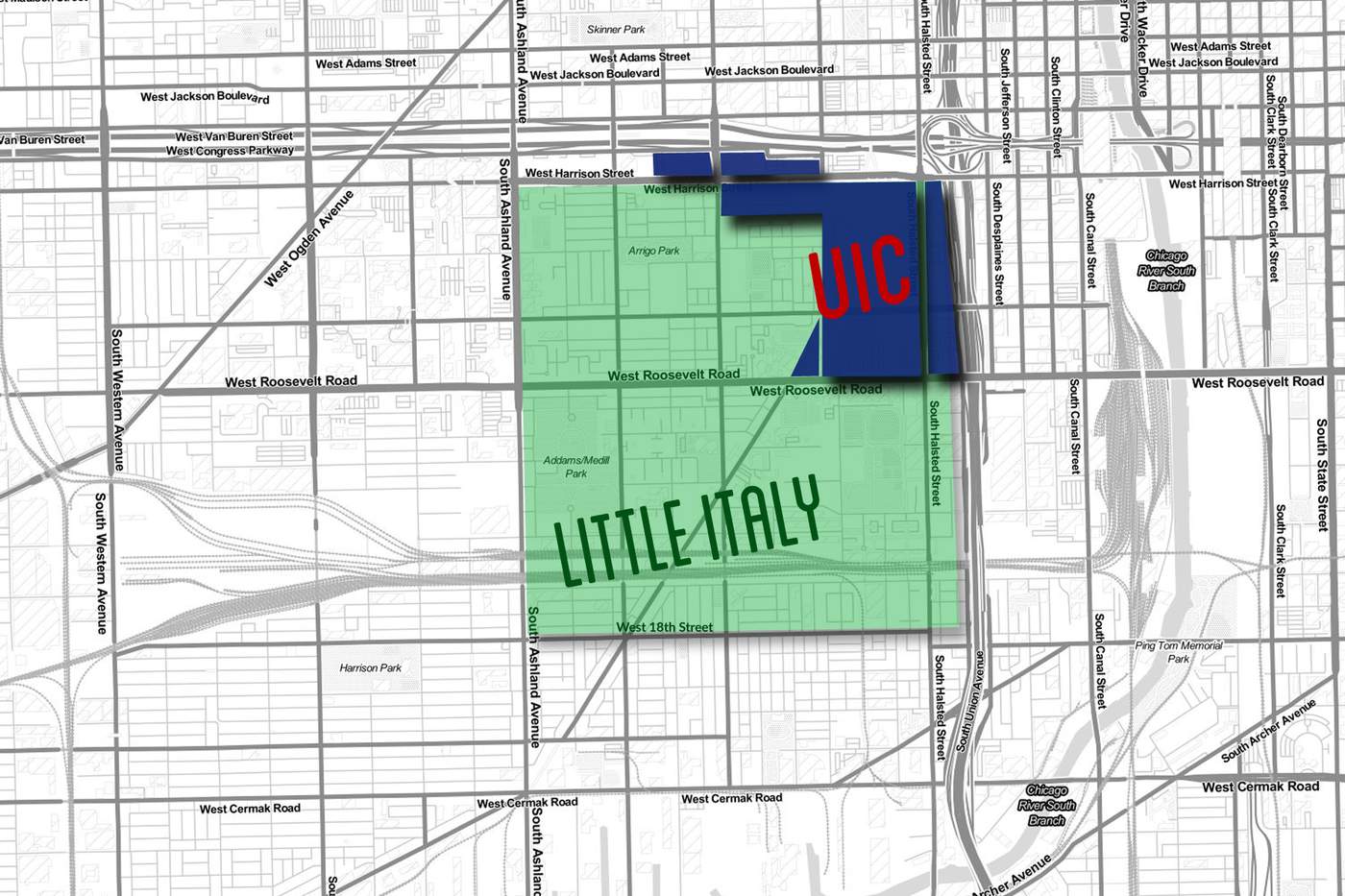Ronnie DeMay grew up on Chicago’s far North Side, but he spent his childhood hearing stories about his family’s “old neighborhood” halfway across town — the Little Italy around Taylor Street, where his great grandparents settled nearly a century ago.
He still visits the neighborhood to enjoy an Italian meal with his wife or to see his grandma’s old three-flat on Loomis Street. But Ronnie says these visits are tinged with sadness over the loss of a once-vibrant Italian community that today brims with Asian restaurants, cupcake shops and national pizza and sub chains. Overall, he says, it “feels lacking compared to [Little Italies in] New York and Philadelphia and other places I’ve visited.”
Like a lot of immigrant descendants, Ronnie wants a place to connect with his roots.
“People generally don’t like just being American,” he says. “They want to be something else, and you need a place to do that, especially in Chicago — ‘City of Neighborhoods.’ As an Italian I guess I always wondered, ‘Where’s my neighborhood?’”

During its heyday, the old neighborhood around Taylor Street housed a vibrant community of 25,000 Italians. (Courtesy Casa Italia Library, Stone Park)
All this led Ronnie to ask: What happened to Little Italy? I've heard stories of Richard J. Daley having a dispute with my Italian ancestors and (bada bing!) there were suddenly hospitals, public housing, and a college dropped on their heads.
He’s referring to stories from his youth that “the Italians had gone against Daley in an election,” leading the Mayor to unleash waves of public projects on Little Italy, waves that would ultimately wash out hundreds of businesses and thousands of residents. These projects include an expanded Illinois Medical District, the Dan Ryan and Eisenhower Expressways, the ABLA public housing projects and the new University of Illinois at Chicago campus.
For the purposes of this story we’re zeroing in on UIC and Daley’s push to put it in Little Italy. Why? Each of the other projects did take its toll, but Taylor Street author Kathy Catrambone says “UIC had the biggest impact because it displaced so many people.” She reflects the view of many, including Vince Romano, editor of the Taylor Street Archives, who calls UIC the ethnic neighborhood’s “death knell.” Plus, there are few projects in Chicago history so powerfully linked to the late Mayor.
So, did Daley — one of the most powerful mayors in American history — peevishly drop UIC on top of Little Italy as punishment for disloyalty at the ballot box, as Ronnie suspects?
It’s worth exploring this theory because it reflects a pervasive suspicion among Taylor Street’s Italian diaspora that the decision was aimed at hurting Italians. And, though Daley came to see UIC as one of his proudest accomplishments, it came at a high cost — for the Italian-American community and even Daley himself.
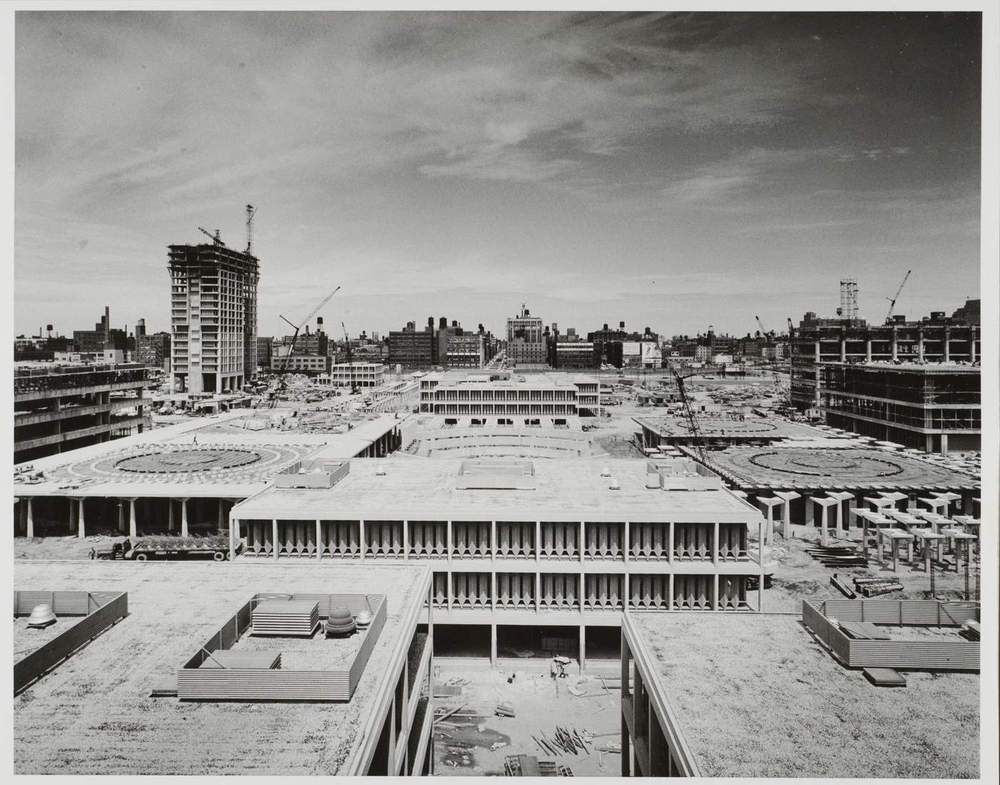
Construction of the UIC Circle Campus, which began in 1963, ultimately displaced large swaths of Chicago's Little Italy neighborhood. (Courtesy UIC Archives Digital Exhibits, UA90999_0361, University of Illinois at Chicago Library, Special Collections)
A new mayor's ties to an old neighborhood
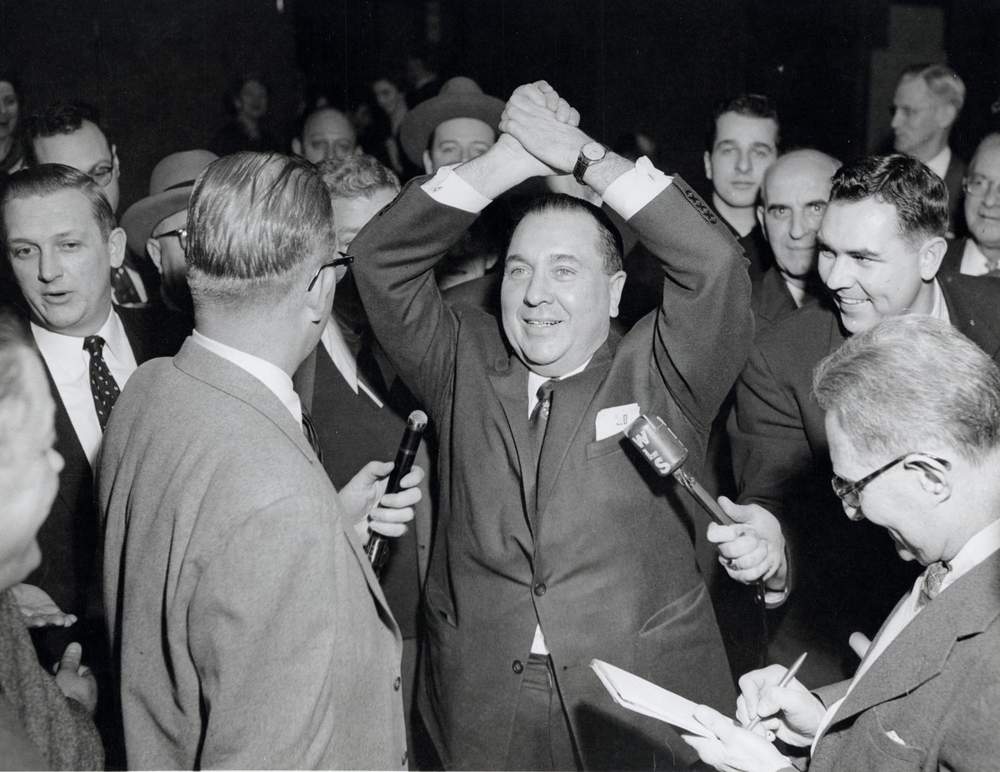
Richard J. Daley raises his arms in celebration after winning the 1955 mayoral election. (Courtesy of Special Collections & University Archives, RJD040100120002_025, University of Illinois at Chicago Library, Richard J. Daley Collection)
Let's start with what was happening in Little Italy in the mid-1950s. Daley took the mayor's office in 1955, and — notably — he got overwhelming support from voters in the neighborhood’s 1st Ward.
According to the Chicago Board of Elections, in 1955, Daley won the ward with 89.2 percent of the vote. And then in 1959 (the year just before the UIC decision came down) he got 87 percent of 1st Ward votes in the Mayoral election.
“We were part of the Democratic machine,” Little Italy native and Loyola University professor Art Lurigio remembers.
“My dad’s father worked for the Park District and my uncle Joe worked for the precinct captain. We voted Democratic because of all the perquisites that came with it.”
Still — and we'll return to this later — the environment at the time was complicated. The 1st Ward was led by Ald. John D’Arco, who was infamous for his association with organized crime. In fact, D'Arco's associates were considered so cozy with Daley that it was attracting unwanted speculation.
The Chicago Daily News referred to these connections as the “crime-politics alliance.” And a 1960 Federal Bureau of Investigation wiretap recorded a mafia associate of D’Arco saying “This mayor has been good to us,” to which D’Arco replied: “And we’ve been good to him. One hand washes another.”
All of this was playing out in a neighborhood undergoing massive transformation.
By the late ‘50s, swaths of Little Italy (including the Harrison-Halsted site where UIC would land) had been designated as blighted urban renewal sites. That meant federal money was available to tear down dilapidated buildings and replace them with affordable housing and infrastructure. Local activists such as Florence Scala pushed hard for these improvements, and City Hall approved many of them.
In 1959 locals even rebuilt the Holy Guardian Angel Church and school that had been razed during construction of the Dan Ryan Expressway. Who attended the school's opening and gave his blessing to plans for the community?
None other than Mayor Daley.
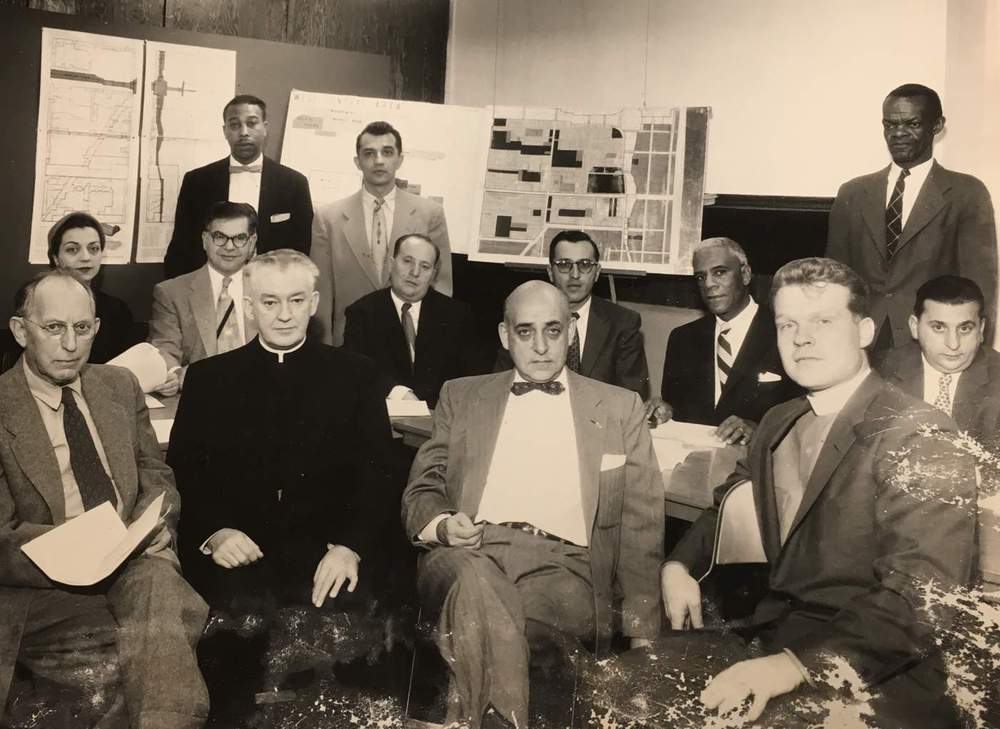
Florence Scala (back left) and community members meet to discuss urban renewal on the Near West Side. (Courtesy of Special Collections & University Archives, University of Illinois at Chicago Library, Florence Scala Collection)
UIC looks for a new home
UIC had conducted undergrad programs at Chicago’s Navy Pier since 1946. By the time Daley took office, the Pier campus was bursting at the seams with students lobbying for a permanent location. The University Board, civic groups and Daley wanted to move the campus, and they wanted to do it quickly.
Between the mid-50s and 1961 Mayor Daley and UIC considered several sites for a new campus:
Just months later, in February 1961, the University Board accepted Daley’s offer of the Harrison-Halsted site. It wasn’t the mayor’s first choice, but it had unique advantages. Ironically, due to years of community revitalization efforts, many local homes and businesses had already been partially razed. Importantly, large portions had been declared urban renewal sites and put under city control. This would speed construction and defray city land acquisition costs since the federal government would foot nearly two-thirds of the bill under the urban renewal Housing Act.
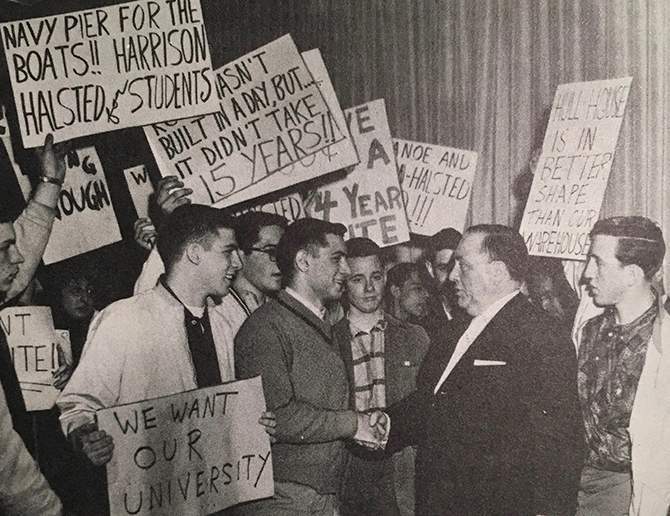
University of Illinois students congratulate Mayor Daley on the Harrison-Halsted site decision. (Courtesy of Chicago Sun Times)
A community divided: urban renewal or urban betrayal?
A charitable interpretation of Mayor Daley's intentions — contra theories like Ronnie's — is that he lost his bid for his first choice, so he turned to the only workable location available in time to take advantage of a state bond issue for construction support and even federal funds.
But that’s not how the selection of the Harrison-Halsted site for UIC came off.
In Boss: Richard J. Daley of Chicago, the late columnist Mike Royko wrote that residents were “stunned” by the announcement.
“The neighborhood’s sense of betrayal was heightened by the fact that they had been a loyal Machine ward. They poured out more Democratic votes than Daley’s own neighborhood,” Royko wrote.
Marchers — many of them housewives from within the community — carried signs like: “Daley is a dictator. He won’t be getting any more Democratic votes from us.”
Florence Scala led such marches and even staged a sit-in at City Hall to protest the construction. Lawsuits filed by her and others dogged Daley’s construction plans for almost two years. The struggle officially ended in 1963, when the U.S. Supreme Court declined to consider an appeal brought by neighborhood activists.
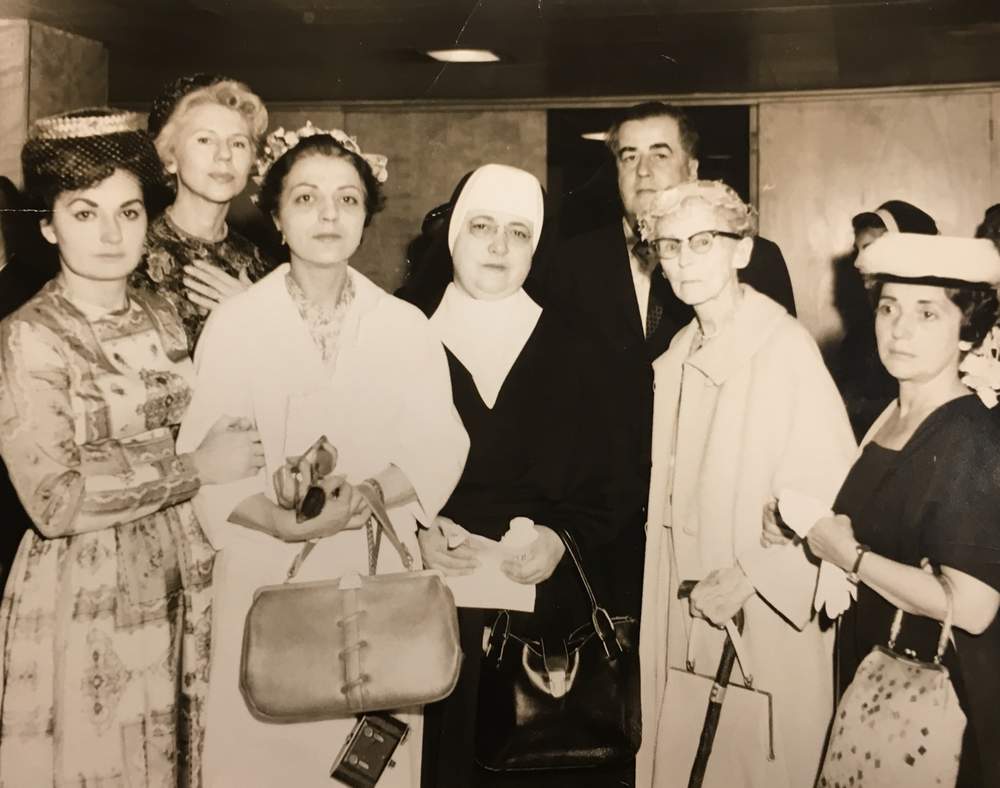
Florence Scala (third from left) at the last mass at Holy Guardian Angel Church before it was razed for UIC construction. The church had just been rebuilt four years earlier after the original was demolished with the construction of the Dan Ryan Expressway. (Courtesy of Special Collections & University Archives, University of Illinois at Chicago Library, Florence Scala Collection)
Scala was left embittered by the process. In a 2005 interview conducted by WBEZ, she said she felt the Mayor sided with might over right.
“One of his comments that he'd make was that he loved neighborhoods, and he wanted to keep the city together through its neighborhoods,” she said. “But he really didn't give a damn about the neighborhoods when push came to shove. If somehow or other you were in the way of his future plans, the neighborhood didn't matter that much.”
That kind of acrimony and disappointment over Daley’s decision has persisted for decades among portions of the city’s Italian-American community.
It’s worth stopping here, though, to point out that — contrary to theories that this was a battle between Daley and Taylor Street Italians — many of Scala’s Italian neighbors either stood on the sidelines or supported the final UIC plans.
The silent included some residents, of course, but it also included institutions such as the Hull House Board and the Catholic Archdiocese of Chicago.
One of the not-so-silent Italian backers of the UIC plan was a local lawyer and eventual powerbroker named Oscar D’Angelo, who died in 2016. He worked with downstate legislators to promote the plan and appeared at public meetings to defend it. And, as he remembered it, he paid a price.
“When Mayor Daley announced the establishment of the UIC it appeared that community had been treacherously betrayed. Those are probably the words my good friend Florence [Scala] would’ve used,” D’Angelo said in a video made by his wife Paula for an awards ceremony in 1988. “Matter of fact, I was hung in effigy and some thought I should have been hung in reality for taking the side of the university.”
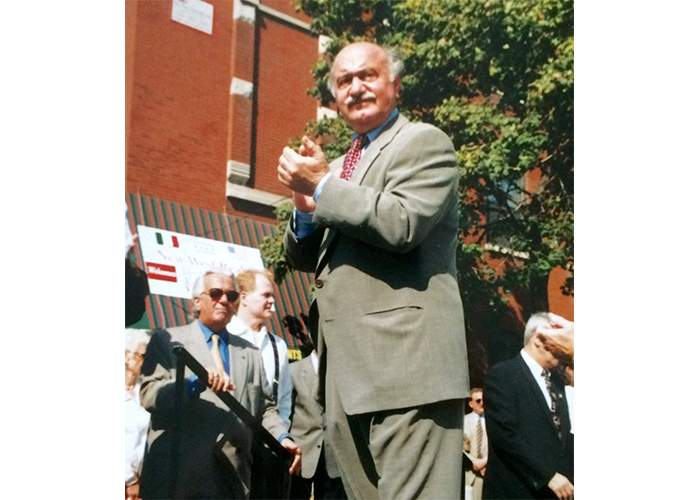
Oscar D'Angelo was known as the unofficial "Mayor of Little Italy." (Courtesy of Paula D'Angelo)
UIC construction would eventually destroy nearly half of his neighborhood, but in the video D’Angelo implies it could’ve been a lot worse.
“At one point the federal government made the argument — and I suspect with a good deal of support and logic — that the entire community should be demolished,” he said in the video. “But that plan was never effectuated.”
Other ulterior motives?
Ronnie’s theory about Daley using UIC to punish Italians takes on other variations depending on whom you talk to.
Lurigio, whose family lost its home to UIC construction, says there was a widespread perception that “it was utterly Daley versus the Italians.”
“The very strong perception [on Taylor Street] was that Richard J. Daley always hated Italians and he wanted to deliberately break up the Italian neighborhood, that he wanted the Italian neighborhood to be decimated because we’d taken on too much political power,” he says.
Taylor Street Archives online editor Vince Romano offers a more specific twist on this widespread view.
“Daley felt that if he broke up the 1st Ward by putting UIC here then he wouldn’t have to answer to the 1st Ward anymore, and he could be his own boss,” he says. “He had the opportunity to stop the Outfit from controlling City Hall and controlling him.”
Indeed, in the years leading up to the UIC deal, Daley had been under scrutiny by the press and even the FBI for possible mob connections. And at the time, he responded by saying the crime syndicate “was there, and, you know, you can’t get rid of it, so you have to live with it. But never let it become so strong that it dominates you.”
If it seems odd that Outfit members would agree to give up their clout, Romano explains that they did so because they could also “fatten their bank accounts” — presumably, with profits from strategic land acquisitions in the area.
But economist George Rosen, author of Decision Making Chicago Style: The Genesis of a University of Illinois Campus, says he’s never seen evidence that such deals were struck before Daley offered the land to the University. And besides, he says, if that was Daley’s intention, it failed because the Outfit remained influential in Chicago politics until at least the ‘90s.

A group of Chicago politicians at a golf outing in 1980. First Ward Alderman John D'Arco (second from left), Fred Roti (second from right) and Pat Marcy (first from right) were widely believed to be associated with the Outfit. (Courtesy of Denny Johnson)
Daley's take
What of Daley’s own account behind the site selection? He shared it in a speech to a packed City Council chamber in 1961.
“It was my hope that this University could be located in the area vacated by the consolidation of the South Side railroad terminals,” he said. “Despite all our efforts, we could not overcome the many difficulties involved to meet the time-table of the University — a schedule made urgent because of the needs of the growing population of college students.”
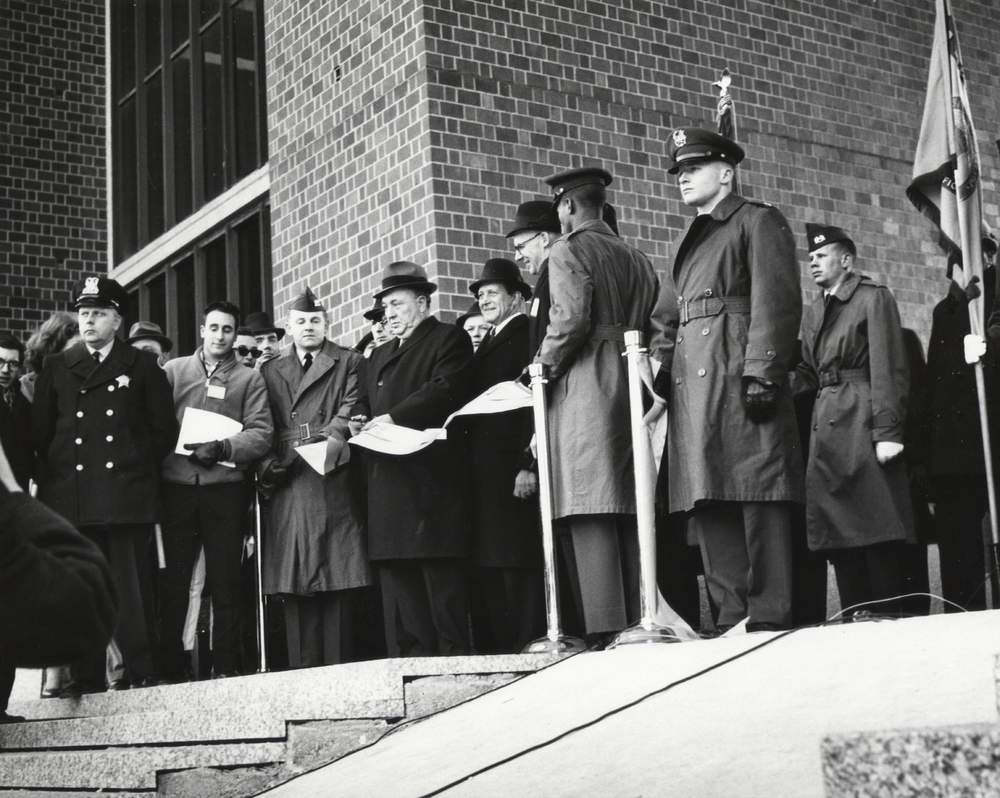
Mayor Daley cuts the ribbon at the Circle Campus opening ceremony in February of 1965. (Courtesy of UIC Archives Digital Exhibits, UA90999_0308, University of Illinois at Chicago Library, Special Collections & University Archives)
Daley admitted to the Council that there’d be suffering, as there had been with the construction of highways and the Eisenhower Expressway.
After the campus opened in 1965, Daley would consistently refer to the project as one of his proudest legacies; however, he also called it one of his toughest political calls — one he’d remain haunted by for years.
At the school’s 10th anniversary celebration he was still defending it.
“Certainly there was opposition, ladies and gentlemen, to this site,” he said at UIC in 1975. “In public office everyone wants something but they want it some other place, and someone has to make a decision. We completed the urban renewal of this great university in record-breaking time, as a matter of fact, in 18 months.”
Not everyone saw Daley’s decision as a straightforward example of the mayor’s reputation for strongman unilateralism. 14th Ward Ald. Edward Burke saw Daley’s determination on the matter as an act of bravery.
“It took a great deal of political courage for him to make that decision,” Burke said in 2014, "because he uprooted one of his most loyal areas of political support in that neighborhood to make way for a university that he thought was vital to the growth and success of the city.”
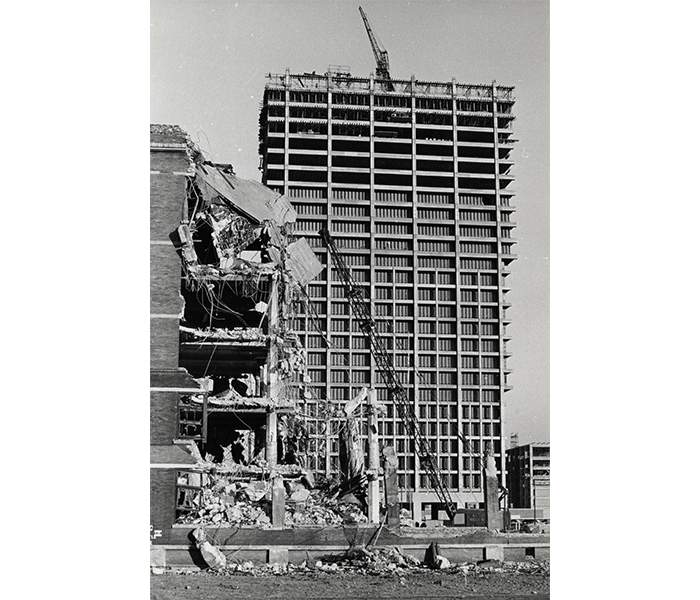
Simultaneous demolition and campus construction in Chicago's Little Italy. (Courtesy of Chicago Sun-Times)
There goes the neighborhood
After learning more about how the UIC decision played out, Ronnie’s rethought stories he’d heard from his youth. He acknowledges that some don’t entirely match up with key facts. And he sees that Chicago’s already divided Italian community was further divided on this controversial issue.
But Ronnie says he’s glad he had the chance to dig into the history and the personalities in Little Italy at the time.
“Florence Scala is my new hero,” he says.
“I really wish I would have known about her earlier because she is just amazing. Even though she failed she fought a good battle. But like Flo said, it wasn’t just one person [who’s to blame], it was everybody. And she was most disappointed by the Italians in her own neighborhood who wouldn’t stand up and fight.”
To listen to the audio version of this story, click here
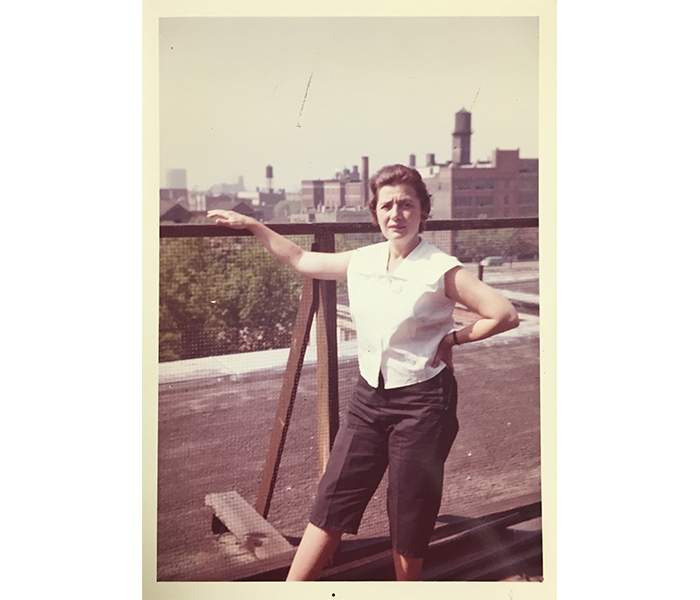
Florence Scala in front of the neighborhood she fought to save (Courtesy of Special Collections & University Archives, University of Illinois at Chicago Library, Florence Scala Collection)
About our questioner
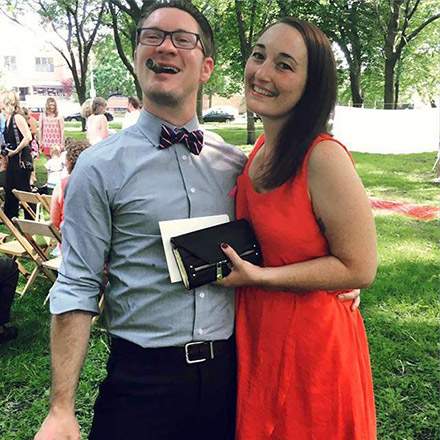
Curious City questioner Ronnie DeMay (left) and his wife Megan. Ronnie wishes for a more robust Little Italy but says he appreciates knowing more about the history of the struggle over UIC. (Courtesy of Ronnie DeMay)
Ronnie DeMay is a building engineer and proud fourth-generation Italian-Chicagoan. He was born and raised in Chicago’s Rogers Park neighborhood, but today lives in Hermosa, where he homebrews beer, raises three chickens and grows Italian vegetables.
Ronnie appreciates stories he’s heard about his grandparents’ time in Little Italy, but says he also understands that neighborhoods can’t stay frozen in time. Still, it doesn’t stop him from wishing for a more robust Little Italy.
Kathy Catrambone says she feels Ronnie’s pain and is working to launch an organization aimed at reviving the Italian identity of the neighborhood.
“There’s interest in better marketing the neighborhood as Little Italy,” she said “People are longing — not just Italians but anyone who wants to be Italian — for that kind of community in Chicago. ... Other cities have shown what can happen when the citizens and city get together to create a really dynamic Little Italy, and it can happen here.”

